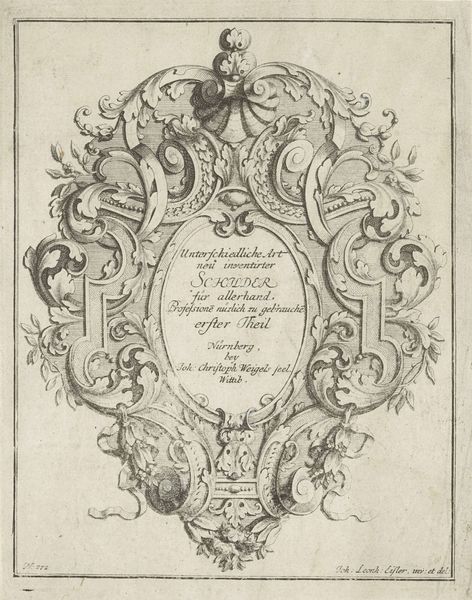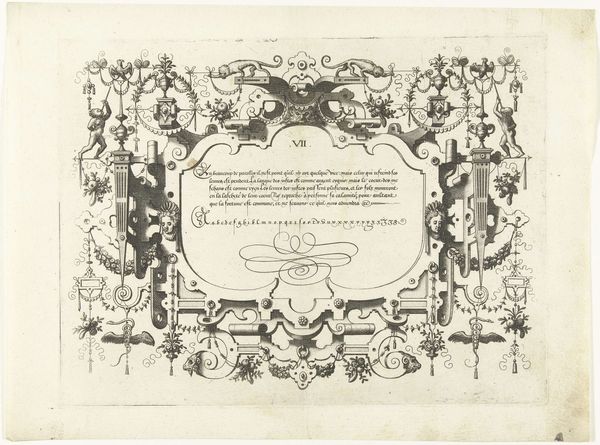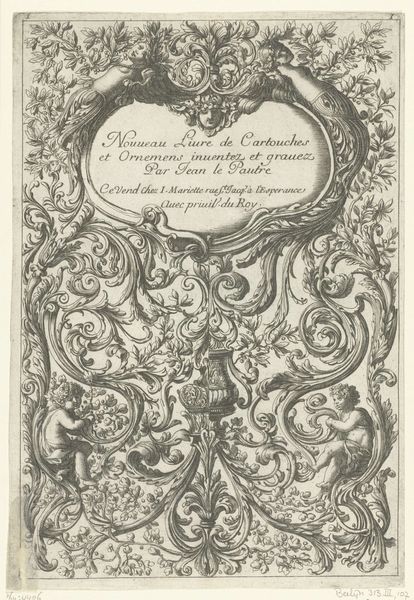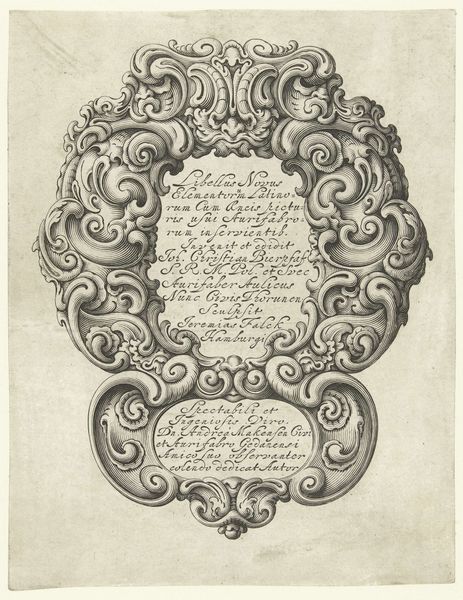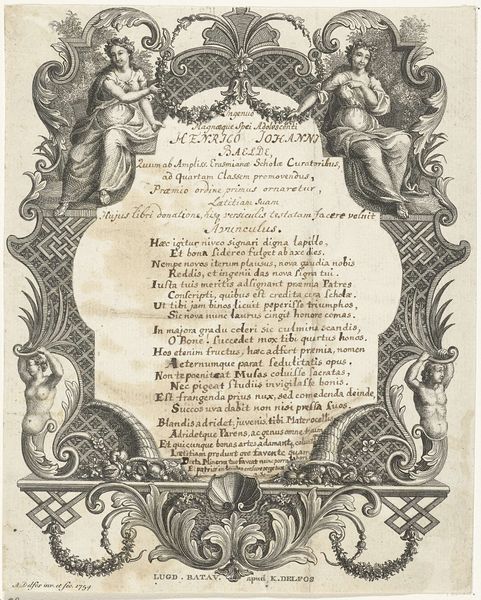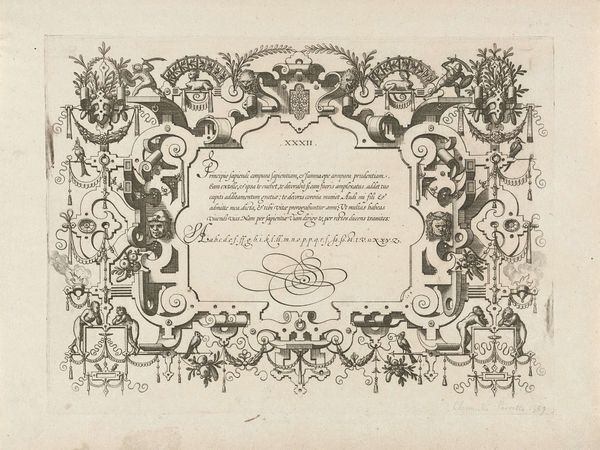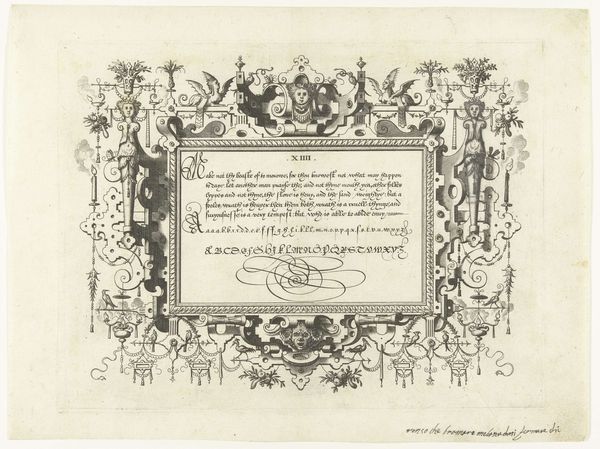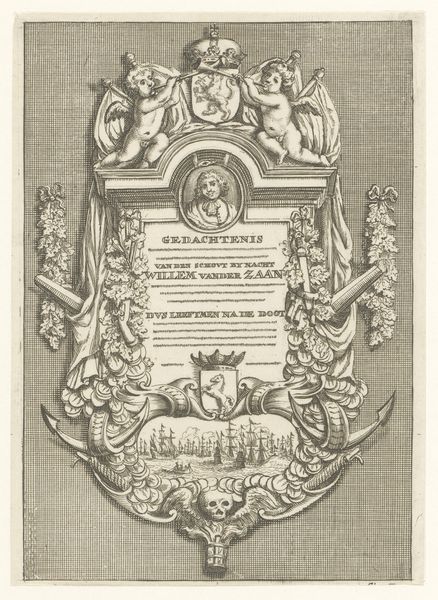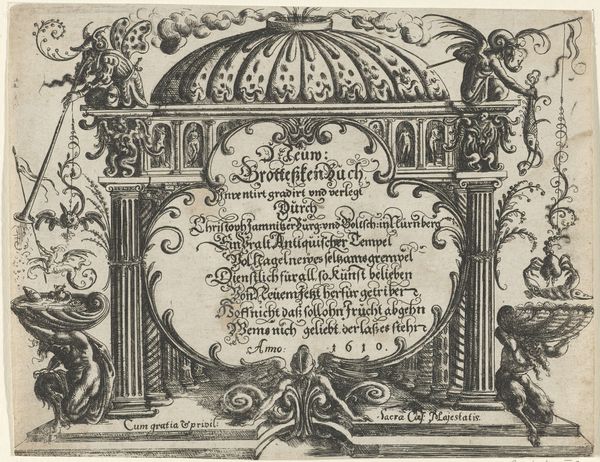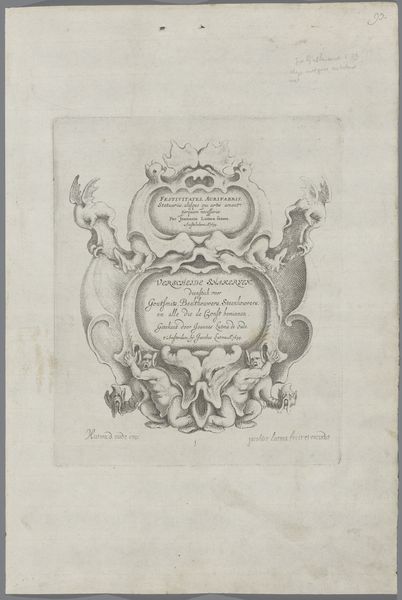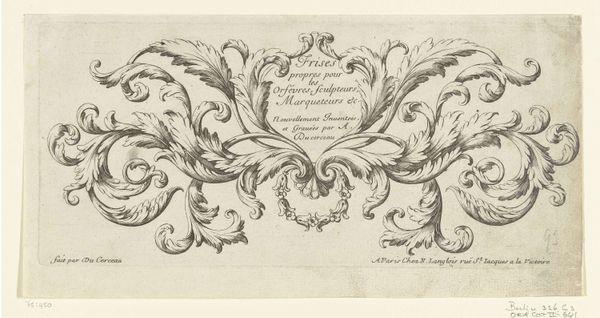
#
pen drawing
#
pen illustration
#
pen sketch
#
old engraving style
#
personal sketchbook
#
pen-ink sketch
#
pen work
#
sketchbook drawing
#
sketchbook art
#
doodle art
Dimensions: height 148 mm, width 230 mm
Copyright: Rijks Museum: Open Domain
Curator: Here we have a pen drawing titled “Arabesken met vlechtwerk,” which translates to Arabesques with braided work. It was created sometime between 1726 and 1734, though we don't know the artist. The piece is part of the Rijksmuseum's collection. Editor: It's immediately striking, isn’t it? The meticulous linework, the symmetry, the way the negative space plays such a vital role... it feels almost architectural. There is a rigid framework which barely constrains the flourishing organic patterns. Curator: That contrast is intriguing, especially given the social context. In the early 18th century, you see the rise of elaborate decoration accompanying increasingly rigid social hierarchies. This style was featured on everyday household goods as well as buildings, emphasizing decorum and status. Editor: Exactly, there is clearly the contrast between artifice and organic structure at play in the linework and shading. Note how the textures create depth while the tight composition provides a very balanced visual experience. Curator: The anonymous nature of the artist also raises interesting questions about authorship and artistic production during this period. Was this a design meant to be replicated? Perhaps it belonged in a workshop or was used to decorate porcelain? The "braided work" reference implies functional design beyond just aesthetic value. Editor: Indeed, if we interpret this design through a semiotic lens, the interwoven lines could symbolize complex relationships or interconnectedness, a pattern to bring different elements into harmony. Curator: It serves to suggest the tension between organic creation and imposed form as these concepts shaped many European cultures at the time. The arabesque itself, with its roots in Islamic art, carries a complex history of cultural exchange and adaptation in European art. Editor: Overall, its tight execution draws the eye and speaks to the sophistication and attention to detail, yet somehow remains visually simple, achieving maximal visual intrigue from sparse means. Curator: It reminds us that the creation of beauty can be both a deeply personal expression and a reflection of broader social and cultural trends. Editor: Agreed; it truly demonstrates how meticulous formal arrangements shape a viewing experience while also carrying meaning across centuries.
Comments
No comments
Be the first to comment and join the conversation on the ultimate creative platform.
